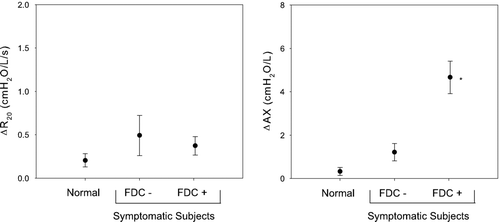Figures & data
Table 1 Clinical characteristics; n = (53)
Figure 1 Baseline impulse oscillometry parameters: R20 (top panel), X5 (center panel) and frequency dependent parameters: R5 − 20 and AX (bottom panel). The dotted line represents the published upper limit of normal for each parameter. Mean values ± SE are graphed pre (•) and post (◯) bronchodilator. Values were abnormal and returned toward normal following bronchodilator. *p < 0.001.
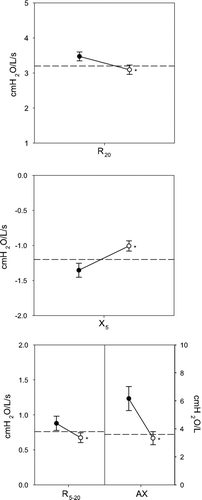
Figure 2 The relationship between R20 obtained by oscillometry and RL calculated from esophageal manometry is illustrated. A tight correlation between R20 and RL was demonstrated. Regression line is plotted (r = 0.74; p < 0.001).
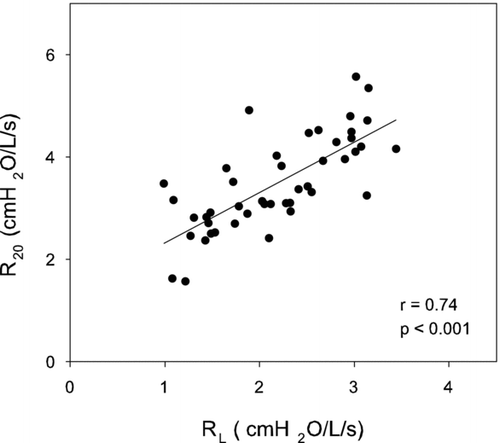
Figure 3 X5 during baseline breathing is plotted for each subject as a function of Cst,l (left panel) and Cdyn,1 at RR60 (right panel). The relationship between X5 and lung compliance was assessed using a nonlinear inverse regression since reactance is a function of elastance (1/C). There is a statistically significant relationship between X5 and Cst,l, but with a large variance. The relationship is highly significant when X5 is related to Cdyn,1 at RR60.
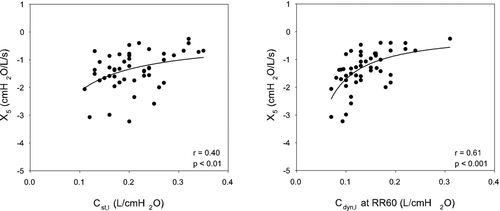
Figure 4 The top panel illustrates a tight correlation between AX and Cdyn,l/Cst,l at RR60 (power function regression). The bottom panel illustrates that the two frequency dependent oscillometric parameters (AX and R5 − 20) are tightly correlated in a linear fashion.
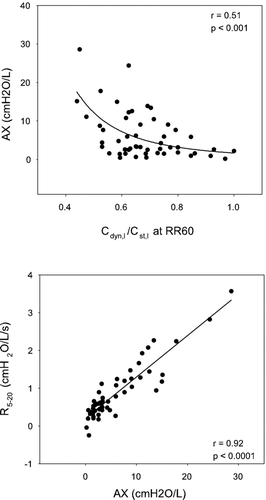
Figure 5 Effects of increased respiratory rate on oscillometric parameters are shown for 18 normal (top 3 panels) and 53 symptomatic subjects (lower 3 panels). Mean data ± SE are presented pre (•) and post (◯) bronchodilator. The dotted line represents the published upper limit of normal for each parameter. Increased respiratory rate had minimal effect on oscillometric parameters in normal subjects. In contrast, in the 53 symptomatic subjects R20 increased minimally, as in normal subjects, but frequency dependent parameters R5 − 20 and AX increased markedly. This enhancement was obliterated following bronchodilator administration despite elevated respiratory rate. Statistically significant increases at RR40 compared with baseline are illustrated as *p < 0.05.
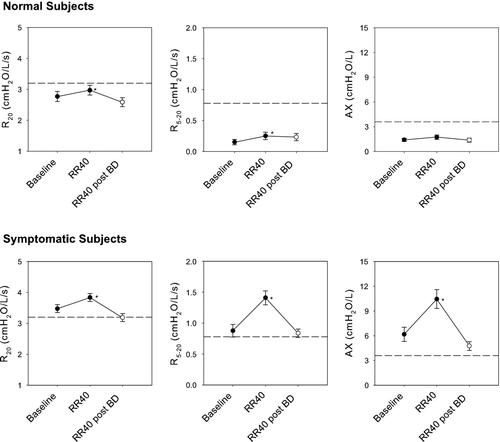
Figure 6 The change in R20 and AX at increased respiratory rate relative to baseline are shown for normal subjects (n = 18), subjects without FDC (n = 7) and with FDC (n = 46). R20 increased minimally and with a similar magnitude in all groups. Conversely, AX increased significantly in subjects with FDC compared with both normal subjects and subjects without FDC. * p < 0.05.
